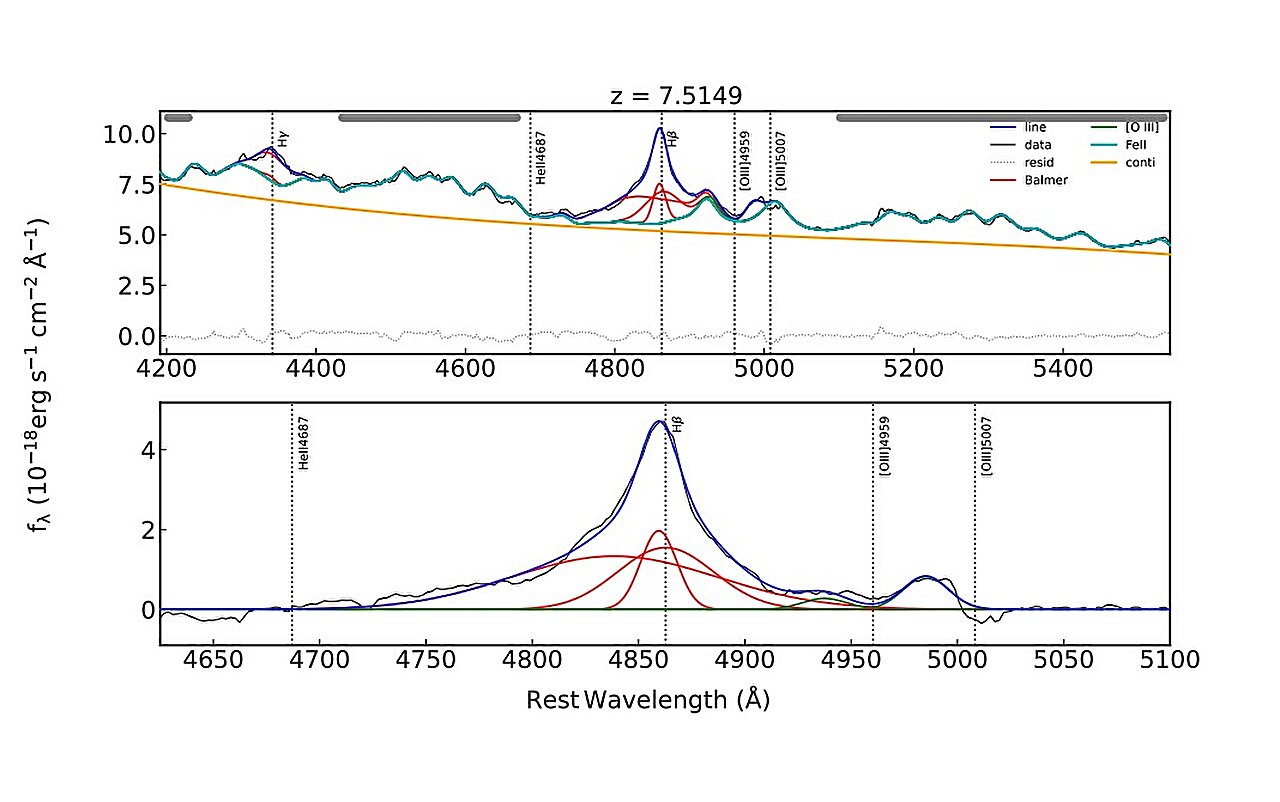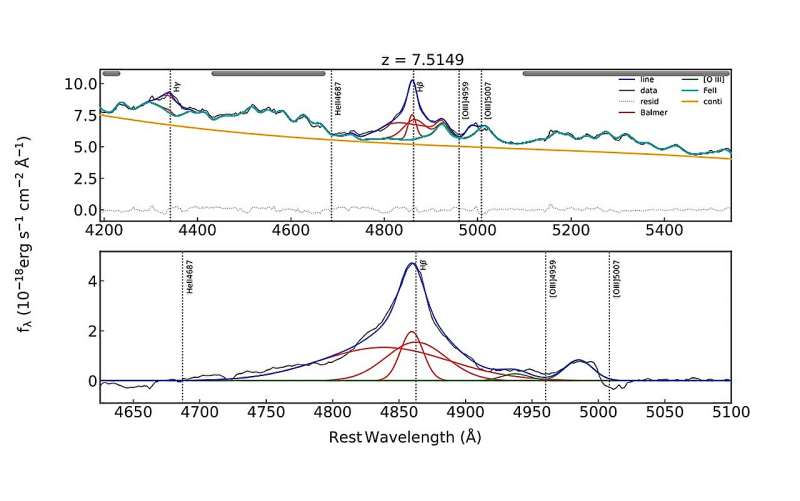

An international team of astronomers has employed the James Webb Space Telescope (JWST) to perform spectroscopic observations of a luminous quasar known as J1007+2115. They detected a fast outflow originating from the quasar’s host galaxy. The finding was reported in a paper published September 20 on the pre-print server arXiv.
Quasars, or quasi-stellar objects (QSOs) are active galactic nuclei (AGN) of very high luminosity, emitting electromagnetic radiation observable in radio, infrared, visible, ultraviolet and X-ray wavelengths.
They are among the brightest and most distant objects in the known universe, and serve as fundamental tools for numerous studies in astrophysics as well as cosmology. For instance, quasars have been used to investigate the large-scale structure of the universe and the era of reionization. They also improved our understanding of the dynamics of supermassive black holes and the intergalactic medium.
At a redshift of 7.51, J1007+2115 is one of the highest redshift quasars known to date. It has a bolometric luminosity of about 204 quattuordecillion erg/s, and its black hole has a mass of approximately 1.43 billion solar masses.
Previous observations of J1007+2115 have found that its host galaxy has abundant molecular gas and dust, with masses at a level of 22 and 0.17 billion solar masses. Moreover, this galaxy is experiencing rapid star formation as its star formation rate is estimated to be 80–250 solar masses per year.
Now, a group of astronomers led by Weizhe Liu of the Steward Observatory in Tucson, Arizona, report new findings regarding the host of J1007+2115. Using the NIRSpec integral field unit onboard JWST, they identified an extended emission of doubly ionized oxygen (O III). This emission is highly blueshifted and broad, and extends to about 6,500 light years away from the quasar.
Further analysis has found that the emission is most likely tracing a rapid outflow in this quasar’s host galaxy. Therefore, taking into account the quasar’s high redshift, it is the earliest galactic-scale outflow known at present.
According to the paper, the momentum outflow rate is about 3.7 undecillion dynes, which constitutes approximately 61% of the radiation pressure force provided by the quasar. Moreover, the kinetic energy outflow rate, at a level of 0.36 quattuordecillion erg/s, is about 0.2 percent of the quasar’s bolometric luminosity. These results suggest that the quasar is powerful enough to easily drive the outflow.
The study found that the outflow has a large velocity of about 2,100 km/s, which suggests that it may easily escape the host galaxy. The mass outflow rate was calculated to be at a level of 300 solar masses per year, while the average dynamical timescale of the outflow was estimated to be approximately 1.7 million years.
More information:
Weizhe Liu et al, Fast Outflow in the Host Galaxy of the Luminous z = 7.5 Quasar J1007+2115, arXiv (2024). DOI: 10.48550/arxiv.2409.13189
Journal information:
arXiv
© 2024 Science X Network
Citation:
Webb detects fast outflow in the host galaxy of a luminous quasar (2024, September 30)
retrieved 30 September 2024
from https://phys.org/news/2024-09-webb-fast-outflow-host-galaxy.html
This document is subject to copyright. Apart from any fair dealing for the purpose of private study or research, no
part may be reproduced without the written permission. The content is provided for information purposes only.